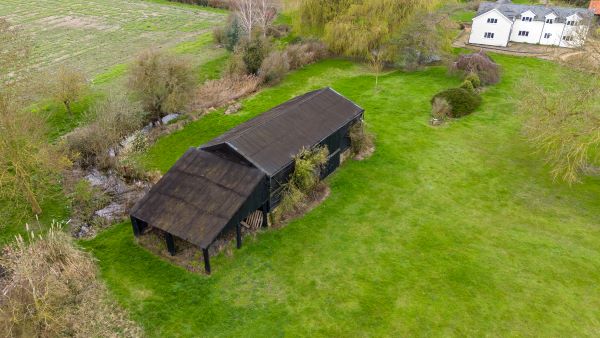Significant new planning laws which seek to cut the ‘red tape’ and give farmers greater freedom to diversify, support and grow their businesses, came into effect on 21st May.
The changes include converting agricultural buildings to a greater number of dwellings and a wider range of commercial uses, such as larger farm shops, and buildings for agricultural training and sporting facilities.
Adam Tuck, director of planning at Cheffins, comments: “The reforms to planning for agricultural buildings is good news for farmers, providing greater flexibility during what has been a particularly challenging year for the farming community. The ability to further diversify under the new regulations can help businesses to become more lucrative, which is better for the wider community as a whole. However, it is important to note that, as with all permitted development rights (PDRs), conditions, requirements and limitations apply – these should always be checked and planning advice sought when looking at change of use / extending agricultural buildings.”

A traditional timber frame barn at Lower Road, Wicken, Ely.
The key changes are summarised below:
Class Q – buildings on agricultural units and former agricultural buildings to houses
- Increase in the number of homes that can be delivered through the change of use/conversion of agricultural buildings from 5 to 10.
- Increase in total floor area allowed from 865 square metres to 1,000 square metres (i.e. 10 homes at 100 square metres).
- Allowance for an extension to the rear of the agricultural building by up to 4m in depth and height. It should be noted the extension must be single storey and on hard standing which existed on or before 24 July 2023 or if it was installed after this date, it must have been there for 10 years.
- If the agricultural building was erected under a full planning permission before 24 July 2023, you should now be able to convert it under Class Q (subject to the wider criteria).
- The agricultural building being converted must now have a suitable existing access to a public highway. If this is not the case, you could look to apply under the old rules until 20 May 2025.
- Buildings don’t necessarily need to be ‘agricultural’ to change use – just located on an ‘agricultural unit’. This opens up the possibility that, for example, equestrian or commercial storage or mixed use buildings within agricultural units could now be converted. Buildings on sites solely in equestrian or commercial use would still be excluded.
- You can extend the external envelope to carry out reasonably necessary operations – meaning cladding etc could be installed.
*Please note, there is a transitional period allowing the previous regulations to be utilised up until 20 May 2025 (i.e. from 21 May 2024 to 20 May 2025 you can choose to progress Class Q under the previous or current (new) regulations).
Class R – agricultural buildings to a flexible commercial use
- Increase in the range of permitted uses to include general industrial uses and outdoor sport and recreation uses, in addition to the existing storage and distribution uses, hotels and general commercial, business and service uses.
- Double the amount of floorspace that can change from agricultural to ‘flexible commercial use’ from 500 square metres to 1,000 square metres.
Agricultural permitted development
- For larger farms (more than 5 hectares) increase the size of new buildings or extensions that can be built from 1,000 square metres to 1,500 square metres.
- For smaller farms (less than 5 hectares) increase the size of new buildings or extensions that can be built from 1,000 square metres to 1,250 square metres.
*Please note, Class R is unique in as much as instead of changing the use of the building to a specific use class, any completed change of use/conversion will be treated as ‘Sui Generis’, which means in a class of its own kind.
If you have agricultural land or buildings and would like to explore their development potential please do not hesitate to contact the Land, Planning, Development & New Homes Team on 01223 271 958 or planning.team@cheffins.co.uk